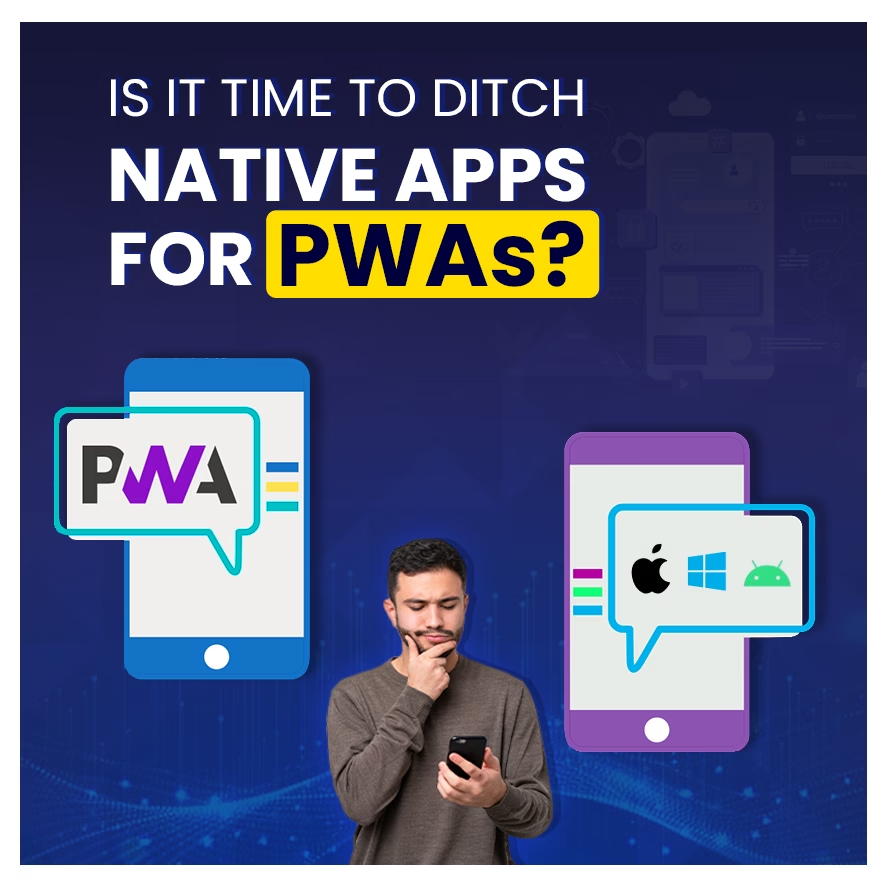If you’re planning to launch a mobile-first product in 2025, you’re likely asking:
Should I build a Progressive Web App (PWA) or a Native Mobile App?
The short answer? It depends on your goals.
With the mobile app landscape evolving rapidly, PWAs are gaining traction — offering app-like performance with web-like convenience. But native apps still lead in performance, monetization, and deep device integration.
In this blog, we break down the pros, cons, and use cases of PWAs vs Native Apps to help you decide what’s right for your next product — and how Peritys can help build it right.
What is a Progressive Web App (PWA)?
A Progressive Web App is a website that behaves like a native app.
Built using standard web technologies like HTML, CSS, and JavaScript, PWAs offer:
- Offline support
- Push notifications
- Home screen installability
- App-like navigation and UX
Popular brands using PWAs: Twitter Lite, Pinterest, Starbucks, Flipkart, JioMart
What is a Native App?
A Native App is developed specifically for a mobile operating system — using Swift/Kotlin/Java for iOS or Android respectively.
It’s downloaded from the App Store or Google Play, has deep OS integration, and can access device hardware, sensors, and APIs more efficiently.
Examples: Instagram, Uber, Zomato, WhatsApp
PWA vs Native App: Feature-by-Feature Comparison
Feature | Progressive Web App (PWA) | Native Mobile App |
Installation | Add to home screen (no app store needed) | Requires download via app stores |
Performance | Good, but limited for animations, GPU | High – optimized for device hardware |
Offline Access | Yes (via service workers) | Yes |
Push Notifications | Supported (except iOS full support delayed) | Fully supported on Android & iOS |
Cost of Development | Low – one codebase for all devices | High – separate codebases for iOS/Android |
Maintenance | Easier – web deployment | Requires store approvals, updates |
App Store Visibility | Not listed on app stores | Visible in Apple App Store & Play Store |
SEO-Friendly | Yes – indexed by Google | No |
Device Features Access | Limited (e.g., camera, Bluetooth partial) | Full access (GPS, camera, AR, sensors) |
Best For | Startups, MVPs, eCommerce, blogs, tools | High-performance apps, gaming, fintech |
Why PWAs Are Gaining Ground in 2025
- Install friction is lower: Users hate going to app stores.
- Development costs are lower: One web codebase for all devices.
- Great for SEO: PWAs are indexed by Google — native apps aren’t.
- Better conversion rates: Twitter saw a 75% increase in Tweets after launching Twitter Lite as a PWA.
⚡ Stat: Flipkart Lite (a PWA) saw a 70% increase in conversions compared to their old mobile site.
So… Should You Build a PWA or Native App?
✅ Choose a PWA if:
- You’re launching an MVP or validating an idea
- You want cross-platform reach fast and cheap
- Your app is content-heavy or browser-based
- You rely on SEO traffic (e.g., eCommerce, news, learning platforms)
✅ Choose a Native App if:
- You need access to advanced device features
- You’re building a real-time, resource-heavy app (e.g., fintech, ride-sharing)
- You want to monetize through app stores
- You care about app store rankings, ASO, and push notifications on iOS
📍 Case Study: How Flipkart Boosted Conversions with a PWA
Problem:
Flipkart faced poor engagement and high bounce rates on its mobile website. Most users in India accessed Flipkart via mobile — often on low-end devices and 2G/3G networks. The native app performed well, but many users avoided installing large apps due to limited storage or data.
Solution:
They launched Flipkart Lite, a Progressive Web App designed for fast performance on flaky networks and entry-level Android devices.
Key implementation highlights:
- Pre-cached key resources using service workers
- App-shell model to speed up navigation
- Push notifications and offline browsing
- “Add to Home Screen” enabled app-like access
Outcome:
- 70% higher conversions among users who used the PWA
- 3x more time spent on site
- 40% re-engagement through web push notifications
- Drastically reduced bounce rates on mobile web
💡 Takeaway: Flipkart used a PWA to close the performance and experience gap between web and native, especially for users in bandwidth-constrained regions — achieving results similar to their app without forcing downloads.
How Peritys Can Help You Build Smarter
Whether you choose PWA or Native, the execution matters more than the format.
At Peritys, we help founders and enterprises:
- Validate product ideas
- Build fast, scalable PWAs using Next.js, React, and headless CMS
- Build high-performance native apps in Flutter, Swift, or Kotlin
- Create cross-platform UI/UX that converts
- Set up robust DevOps pipelines for scalable deployment
Ready to launch your app the smart way?
Visit www.peritys.com
Final Verdict
In 2025, there’s no one-size-fits-all answer.
- If you’re aiming for reach, speed, and budget → start with a PWA.
- If you’re building for depth, performance, and monetization → go native.
Still confused? That’s what we’re here for.
Let Peritys help you choose, build, and grow with confidence.


